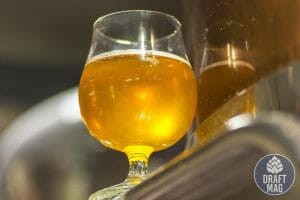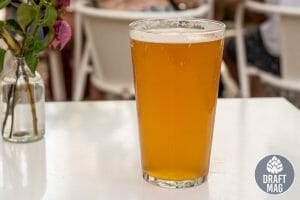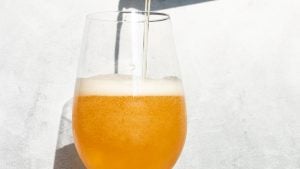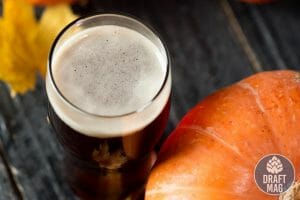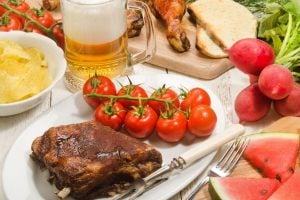Blonde Ale Recipe: An Expert Guide To Brewing the Best Summer Beer
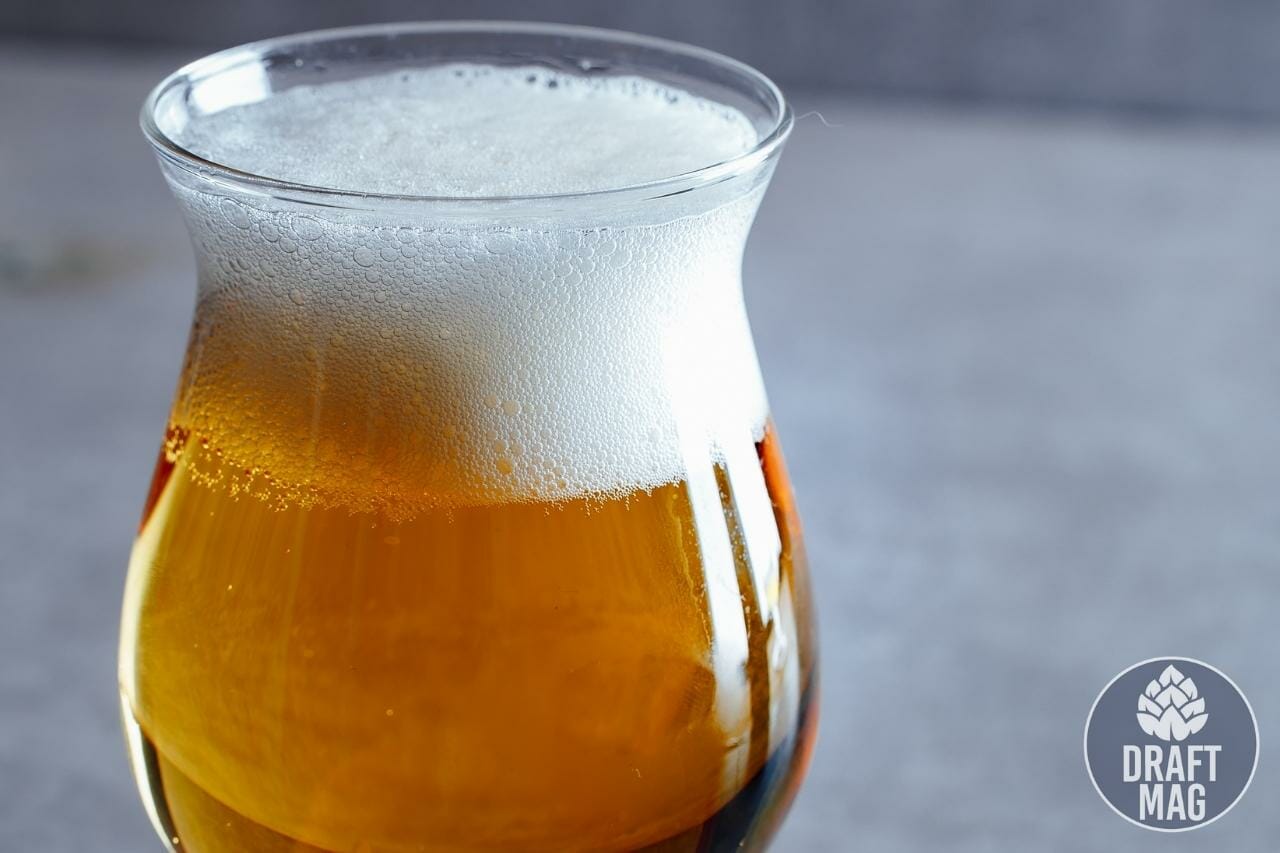 This Blonde Ale recipe is better and more flavorful than any other beer recipe. Blonde ale recipes are usually simple, and any beginner homebrewer can also try it out and get great results. Often called a “golden ale,” the blonde wheat beer is one of the most approachable beer styles.
This Blonde Ale recipe is better and more flavorful than any other beer recipe. Blonde ale recipes are usually simple, and any beginner homebrewer can also try it out and get great results. Often called a “golden ale,” the blonde wheat beer is one of the most approachable beer styles.
Here’s how you can make one:
How To Make Blonde Ale: American Blonde Ale Recipe
– Grains:
- 80 percent 7 pounds Pale Malt
- 10 percent 1 pound Vienna Malt
- 5 percent 8 ounces White Wheat Malt
- 5 percent 8 ounces Victory Malt
– Hops:
- 1 ounce Cascade – Boil 60 minutes
- 0.5 ounce Cascade – Boil 10 minutes
- 0.5 ounce Cascade – Boil 10 minutes
– Yeast:
- 1 package Wyeast 1056
- Mash at 152 F for 60 minutes
– Method:
- Mill the grains and dough-in targeting a mash of 1.5 quarts of water at a temperature of 152 F.
- Hold the mash at 152 F until the enzymatic conversion is complete.
- Infuse the mash with boiling water while continuously stirring the mash system and raise the temperature to 168 F.
- Sparge slowly with 170 F water, collecting wort until the pre-boil quantity is up to 6.5 gallons.
- The total wort boil time is 90 minutes.
- Add the bittering hops with 60 minutes time remaining. Then add 0.5 ounce of cascade when 10 minutes are remaining. Finally, add a 0.5-ounce cascade at the end of the boil.
- The beer is now at OG 1.048. It is time to pitch the blonde ale yeast.
- We use Wyeast 1056. Add this into the wort and ferment at 68 F. Keep the temperature low to get a nice, clean beer.
- Fermentation should be complete within a week. Allow the yeast to settle and the brew to mature for a day or two more.
- Add priming sugar to the bottom of the keg and transfer the fermented beer to the keg or a bottling bucket. Stir well and keep it in a warm, dry place. Your beer is now ready to be bottled. Goal carbonation levels are 2.5 volumes.
Ingredients and Tips for Homebrewers
These tips and recommendations come in handy if you are a homebrewer looking to try a hand at brewing this stunning American Blonde Ale.
– Grain
It is always important to use the best quality ingredients to yield the best result. Many homebrewers try to adjust with the next best substitutes.
When we talk about grain, a good quality base grain like domestic 2-row or North American two-row malt or pale malt go best for this style of beer. These would give a nice, rich background character and the right bready notes. It is best to avoid British or Pilsner malts here.
As for specialty grains, light Crystal malts, Biscuit, or Munich malts could be added. Try to keep the base malt to a maximum and just about one or two specialty malts up to 10 to 15 percent. These can provide some malt accents. Try to keep it simple.
– Hops
The original gravity in an American Blonde ale is about 0.3 to 0.6. A low alpha hop variety should be used here. No more than two hops should be used. The beer can range from slightly sweet to slightly bitter. Nothing overboard, though. Be careful, as higher bittering hops could lead to an American Pale Ale instead of a Blonde ale.
The hop flavor in this type of beer is very low. A mellow hop variety like Willamette can be used. Dry hopping can also be done to add aroma to the beer.
Avoid using extremely pungent hop varieties like Centennial, Columbus, or Simcoe. Hops for Blonde ale are endless. Just use what makes you happy.
– Mash
If you want a lighter overall body of the beer, go with a single infusion at 148 F for 60 to 90 minutes. This increases the fermentability and gives a lighter, dryer body to the beer.
If you want a rounder, fuller beer body, use a single infusion mash at 152 F for 60 minutes. The higher temperature leaves more sugars unfermented, hence creating a fuller body.
– Yeast
Choose a yeast that gives away light fruity esters. American Ale Wyeast 1056, White Labs American Ale, Safale US-05, and Danstar Nottingham are good options to consider.
Some Brewers also use California Ale yeast or Belgian Ale yeast. There is a range of options to choose from. Pick what suits you the best and go on from there.
Whatever you choose, ferment at the lower end of temperature, which brings out the clean and light character required for blondes. Hold the temperature steady throughout the process to avoid any off-flavors.
– Fermentation
Ferment around 67 F and hold the temperature throughout. If you are unsure of the temperature, 67 F is a good start. Keeping a steady temperature will give you proper attenuation and avoid off-flavors.
Characteristics
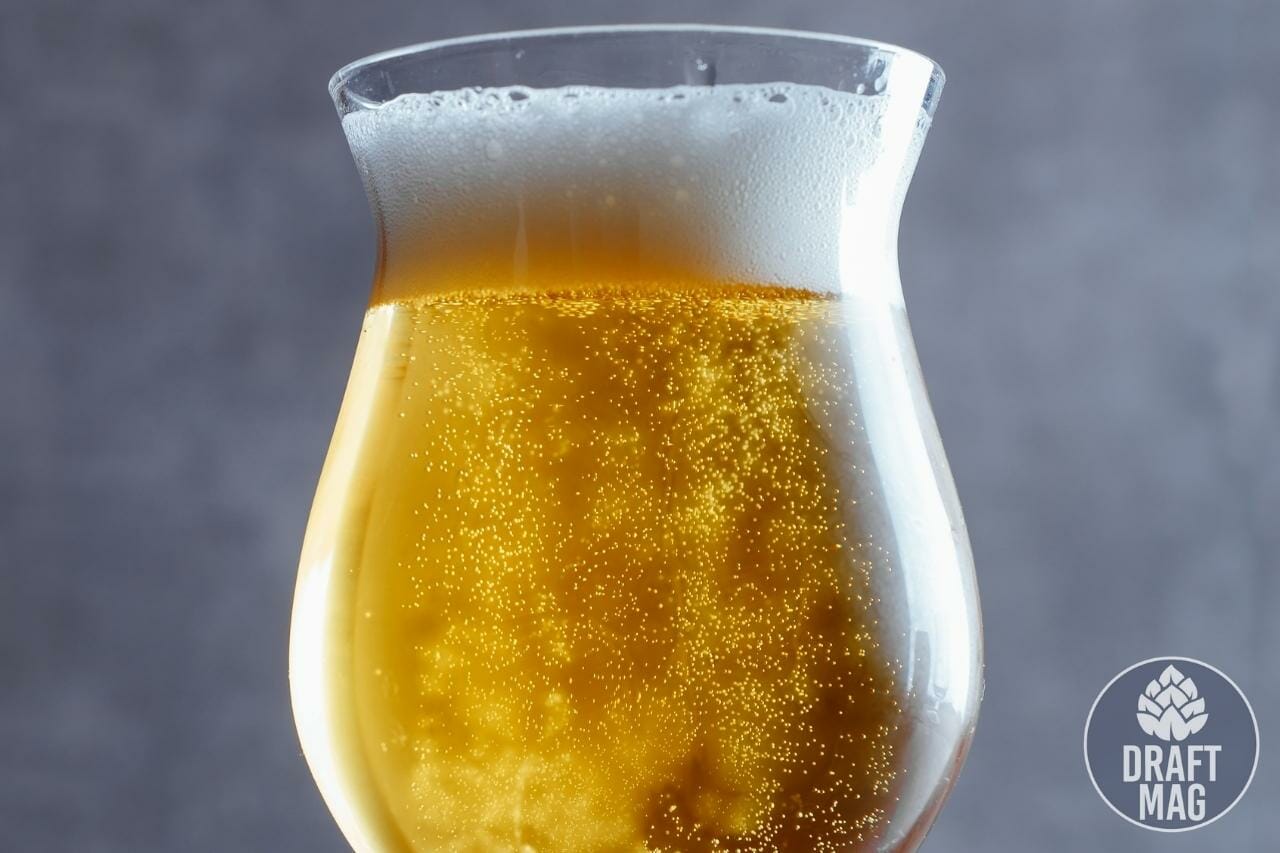 The BJCP calls this beer “a light yellow to deep gold color beer. Clear to brilliant with low to medium white head with fair retention.
The BJCP calls this beer “a light yellow to deep gold color beer. Clear to brilliant with low to medium white head with fair retention.
It has a light to the moderate sweet malty aroma with a light bready and caramelly note. These may have low to medium hop aroma and can reflect almost any hop variety.”
| Original Gravity | 1.038 – 1.054 OG |
| Final Gravity | 1.008 – 1.013 FG |
| Color Range | 3 – 6 SRM |
| ABV Range | 3.8 – 5.5 percent |
| IBU Range | 15 – 28 |
| Appearance | Pale Yellow to Rich Gold. Excellent Clarity, Medium snow-white head |
| Aroma | Low to Moderate Sweet Malts, Hops, and Fruity Esters, with no Diacetyl |
| Favor | Low caramel notes, Sweet maltiness, Light hoppy bitterness, Low fruity esters. Overall Dry finish |
| Mouthfeel | Medium-light body, Smooth to drink, medium carbonation, slightly dry finish |
| Food Pairings | Roasted Chicken, Fried Shrimp, Caesar Salad, Spaghetti, Cheese, Sugar Cookies |
– Style Profile of Blonde Ale
These are the style guidelines of the blonde ale-style beer given by the BJCP. The BJCP branches the Blonde Ale under the Pale American Ale.
-
Appearance
This beer is light yellow to deep golden in color. It is extremely clear and has a medium-lived snow-white head with good retention characteristics.
-
Aroma
Blonde Ales are sweet in fragrance, malty in nature with light bready and caramelly notes. There is very little fruitiness in the beer. Although some brewers enjoy experimenting with added fruity esters, it remains subjective. They have a very low hop aroma, with a fruity, spicy, and floral hop character. There is no presence of diacetyl.
-
Mouthfeel
The beer is light to medium-bodied. There is balanced medium carbonation. Overall, the beer goes down smoothly with minimum astringency and almost little bitterness. Also, this is a light beer.
-
Taste
Malt flavors of bread, biscuit, toast, and wheat ponder on the palate. There is initial soft malty sweetness. Caramel flavors are almost nil to lightly present.
Fruity esters are optional, depending upon the brewer. Low to medium fruity esters are not desired but are acceptable. The beer is also extremely low on hop flavor.
There is a clean balance between malt and hops, and the beer is medium-low on bitterness. The beer finishes medium-dry, with slight residual sweetness. There is no presence of diacetyl.
-
Food Pairings
When we talk about food pairings, mostly lighter dishes go with this style of beer. Foods like chicken Caesar salad, salmon, nutty cheese, apricot cake, lemon tarts, and lemon custards are very good choices.
Origin & History of This Beer
Blonde beer is an umbrella for a variety of beer that comes under its shelter. These include the Blonde Ale, the American Ale, and the Golden Ale.
This beer was first brewed in the 1800s in North America. Blonde ale came to existence as a lighter version of the pale ale and was called dinner or sparkling ale. The beer got its name not only because it was blonde in color but also for its characteristics.
This is one of the least challenging beers in any brewery’s lineup. Modern Blonde Ales are brewed across the world. From Belgium to Brazil to India, every country has its own version of the Blonde Ale.
– What Is a Lawnmower Beer?
A lawnmower is a term used in the beer world for a beer you wish to drink on an afternoon dog walk or a beer while you are mowing your lawn. The blonde ale is often given this name as it is an extremely fresh, breezy, and light beer. It is perfect for an afternoon picnic or a sunny day at the beach.
– Examples of the Blonde Beer Style: Nine Must-Try Blonde Ales
- Garage Brewing Company 951 Blonde Ale – a tropical nose with an earthy finish, backed by honey.
- Wolf’s Ridge Brewing Daybreak – Vanilla flavored with light bitter hops and a bitter finish.
- Deep Ellum Dallas Blonde – Caramel, biscuit, melon, and berry hops with light esters of stone fruit.
- Lawson’s Finest Liquids Knockout Blonde – Lemon and rose, dank and hoppy finish, slightly floral, and fruity notes.
- Sun King Brewing Orange Vanilla Sunlight Cream Ale – Intense and overpowering orange cream-like with a light sweetness.
- Prison City Brewing Seward’s Folly – Tropical fruit notes like mango and guava with gentle bitterness.
- Surly First Avenue + 1 – Malt sweetness, light esters, woody, herbal, lingering bitterness.
- Broad Brook Brewing Company Biere de Peche – Stone fruit, pumpkin pie, sweet and spicy.
- Four Saints Brewing Omie – Honeydew, tropical gummi, distinct candy note with low carbonation.
FAQ
What kind of beer is a Blonde Ale?
Blonde Ale is a refreshing, light-colored beer that’s brewed with pale malt and has a low hop profile. It’s known for its balanced and approachable flavor profile.
What’s the right pH for a Blonde Ale?
The ideal pH range for a Blonde Ale is between 5.2 and 5.5. This range promotes enzymatic activity during the brewing process and contributes to the beer’s overall flavor and stability.
What’s the best mash temperature for a Blonde Ale?
The best mash temperature for a Blonde Ale is between 149°F and 152°F. This range allows for the conversion of starches to fermentable sugars while minimizing the extraction of tannins and other unwanted compounds.
Conclusion
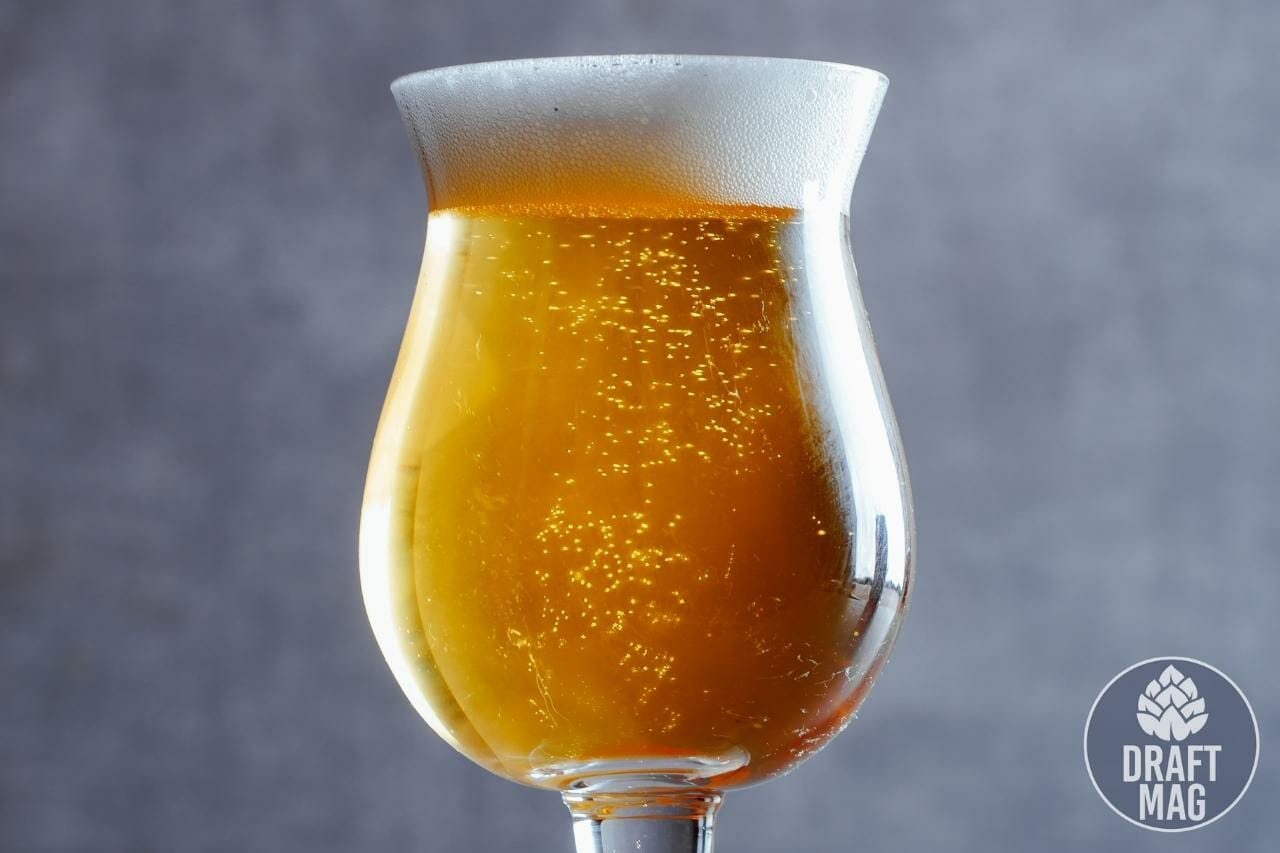 The Blonde ale beer style is an overall refreshing summer Blonde Ale drink. This is one of the best blonde ale recipes you’ll ever find.
The Blonde ale beer style is an overall refreshing summer Blonde Ale drink. This is one of the best blonde ale recipes you’ll ever find.
Keep the following in mind:
- Keep the base malt limited to one type. You can add some mini quantities of specialty malts if you desire.
- Keep fruity esters to a minimum. The loud flavor profile does not go well with the blonde beer style.
- It is best advised to use a single infusion mash at 152 F for 60 minutes. It is crucial to maintain the temperature to get a full clarity, light-bodied beer in the end.
- If you want a lighter beer, mash it at 148 F for a longer time. This will yield a light body beer.
There are plenty of varieties of Blonde Ales available in the market, but it would be a fun thing to make one yourself.
Happy brewing!

